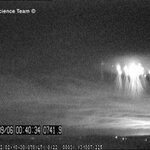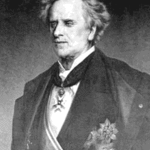Physics

In tales, legend and role-playing games, sprites are tiny creatures that cause lots of rascally hijinks - sometimes they even dance in the sky. Scientists at Tel Aviv University say that some "sprites" are very real and they are zipping across the atmosphere, providing a possible explanation for those more modern legendary denizens of the skies; UFOs.
Thunderstorms, says Prof. Colin Price, head of the Geophysics and Planetary Sciences Department at Tel Aviv University, are the catalyst for a newly discovered natural phenomenon he calls "sprites." He and his colleagues are one of the…

Someone on this site recently posed the following thought experiment questioning the postulate of special relativity that no object can travel faster than the speed of light - c. Imagine a one dimensional problem in which two travelers, move close to the speed of light, but in opposite directions - one moving close the speed of light in the positive direction and the other traveler moving close to the speed of light in the negative direction.
Wouldn't these observers perceive the relative velocity of the respective other as exceeding the speed of light (i.e., approx. 2c)? …

Its a matter of 64 years, at the close of WW2 since a few Norwegian Radio Astronomers, first encountered the CBR. Continuous searches for intelligent have yeilded nothing.
One possible reason that we are alone, at least in the home Galaxy is the fine balance of conditions neccessary to support life. Therefore any major imbalance may preclude its development. Such a factor is the inclination of the Solar Core to the ecliptical that generates the massive twin spirals inside …

There is often an uncomfortable and artificial hierarchy amongst theorists and experimentalists. Those exalting pure theory often forget that applied science is an art unto itself as is engineering. There are many problems in applied science or engineering in which theorists are ill-equipped. Of course, there are rare examples of great theorists who were also great experimentalists such as Fermi. Steven Quake describes some examples of the crossover between pure and applied science and the scientists behind these initiatives.

The Higgs field isn't the only thing the LHC might unearth. A while back Sean Carroll posted a great discussion of other possibilities including supersymmetry, dark matter and something not yet predicted.

In all the hype surrounding the Large Hadron Collider during the last few years, it was easy to miss the fact that low energy physics was still accomplishing a lot - and that no one was sure what the LHC could really do because we didn't know what needed discovering. What we think it will do is based on the success of the indirect approach in science. Darwin's evolution by natural selection, for example, gained early acceptance because without it nothing much in biology made sense. Later discoveries including genetics and a detailed fossil record reaffirmed that…

A well known professor of analog circuit design and theory once said "all models are wrong". Analog design is particularly rewarding and challenging, I believe, for this very reason. Those words have echoed in my mind during many junctures in my journeys to learn something about the physical world. Whether you are a theorist, phenomenologist, experimentalist or some combination of these, this fact is inescapable.I am fascinated by how concepts of everyday life leak into all scientific thought, whether it be an elementary concept in engineering or within the confines of some…

There is only one particle. The Quantom. The Universe, and everything in it, is actually an illusion, generated by the Quantom. The Quantom, is a very, very, lonely particle, and it is truly infinitismal. The Quanton, is a right little wizard, and has infinite velocity, and it traverses the entire extent, of the Universe, stopping momentarily at every possible location.
Scientists, some…

I have been working in research for 36 years now. As the millennium turned, and our department found itself being starved of staff like the Hodja’s Donkey, I found myself being called upon to assume some small teaching roles. I found two incompatible things: one, that I really enjoy teaching, even more than research; two, that there is so much physics that I never had learned properly.
On getting into discussion with one of the students about thermodynamics, he recommended to me A Hot Story by G. Venkataraman. This is one of the Vignettes in Physics, an excellent series of…

Finding Evidence Without An Eyewitness
Hi, my name is Bernie Horvath, I am the author of The Home and School Science Activity Books, Volumes I and II.
My goal today is to demonstrate by simple experiments that we can prove that things exist without seeing them. You just have to be looking for evidence and ask yourself some questions.
Did you ever wonder how a person could be convicted of a crime when no one saw them commit the crime? Your first thought may be fingerprints, which is an excellent idea. What if the criminal was wearing gloves? Hmmm!
In a science reference book, you can find…